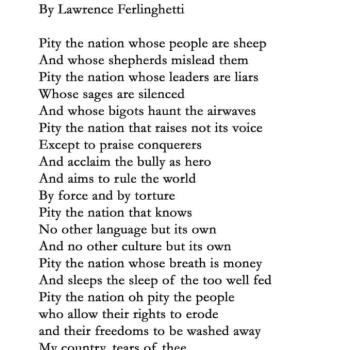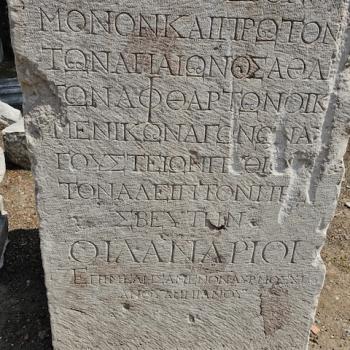This morning (in the heresy and schism lecture) we stressed variety–even Jesus, Paul, John express themselves differently. But are they saying the same thing? Just as soon a theology developments, differences appear, and the question becomes what is legitimate and what is not. But on the main issue the NT is clear— there are those being saved, and those being destroyed (1 Cor. 1; 2 Cor. 2). External pressure meant that only the serious joined, the rest were outside. But outside what? The word implies structure, organizing– see Mk. 4.11ff– ‘those outside’. What did response to the Gospel mean? Joining the church, but what was the church? There were theological and phenominological aspects which ought to be related to each other.
The church is the medium of partially realized eschatology, between the two advents of Jesus, more specifically between the resurrection of Jesus and his return– parousia. The church’s existence bears witness that Jesus is Lord and to the resurrection. If it ceases to bear this witness, it ceases to exist, whatever structure it may retain. Of course this is a matter of gradation. Others have different ways of sharing this witness– charismatic, sacramental, ethical. This takes us from theology to phenomenology.
What in NT times did this church look like? How was it organized? We shall have to talk about ministry, but this is not necessary. Our earliest pictures hardly need ministers. Mt. 18– deal with your brother privately, or with 2 or 3, or take it to the church. Thus either you gain your brother, or he goes out. 1 Cor. 5 is nearly the same. The church must meet but Paul carries weight. The result is the same-exclusion. cf. church meetings in 1 Cor. 14. The general rule is prophet one sits down when prophet two stands up. Some different groups must be tolerant of each other but must not exclude each other (Rom. 14). Where ministers exist they tend to focus these activities and the visibility of the church, but add no new principles. They were inevitable. There was pressure of religious and spiritual maturity. There were issue of age and social presentability. The NT is concerned to check rather than to add.
But any organization can by appropriate measures of discipline by exclusion. Where in the NT does this happen? How is it done? For what reasons? Paul presents a varied picture of discipline and tolerance. It is particularly important to analyze this. 1 Cor. 16.22f. If anyone does love the Lord, let them be anathema.. But in Gal. 1.8-9 he anathematizes those who preach ‘another’ Gospel. cf. 2 Cor. 11.3-4. See especially 1 Cor. including the list in 6.9-11. The incestuous man must be thrown out. One should appointed to act as judge. What happens if the marriage rules are transgressed? “Eidolothuton– ‘you can’t drink from the cup of demons and the cup of the Lord’. What does cannot mean? Note obedience regarding 16.15f.
Appeal– Paul appeals to his own apostolic authority and to universal Christian praxis. In 2 Cor. and Gal. Paul is helpless, he can only ask for obedience.
Acts 5– Ananias and Sapphira- here we see radical discipline. Acts 9, unwillingness to accept Paul. Acts 11, Peter rebuked, mission to the Gentiles. Acts 15– how is the matter settled– by rules. Acts 20 grievous rules in the future.
John– the world, Diotrephes 1 Jn. 4.1; 3 Jn. 9-10
Hebrews- second repentance (Luther)– 10.26; 12.17; 6.4-8.
1 Pet. 4-5
Pastorals– exclusion of the recalcitrant.
Mk. 10– the strange exorcist, and rules for rulers.
What can we collect and deduce here– very little. At first the main criterion seems to be personal loyalty. Perhaps loyalty is measured by behavior, belief but this grows into keeping the rules and accepting the doctrines. This on the personal level or with collective discipline raises the question of schism which in turn leads to ‘early Catholicism’. Was there a special mixture of constituents in the NT? [but note the presence of the ‘idiotes’ in the prophecy time of worship in 1 Cor. 14. Non-believers were invited to the meetings apparently which one would expect with an evangelistic religion. BW3] Eventually when doctrine becomes dogma and there is ministry, discipline, sacraments and rules for taking it, there is pressure for uniformity. Schism arises out of a break of the uniformity.
Kasemann asks does the NT provide for the unity of the church? Certainly not for its uniformity for we observed different ministerial structures. When does a Christian body engage in schism over against another part of the body? When must a member be excluded? When they deny the Lord who saved them? And what is contained in this denial? And how is rule to be applied?













